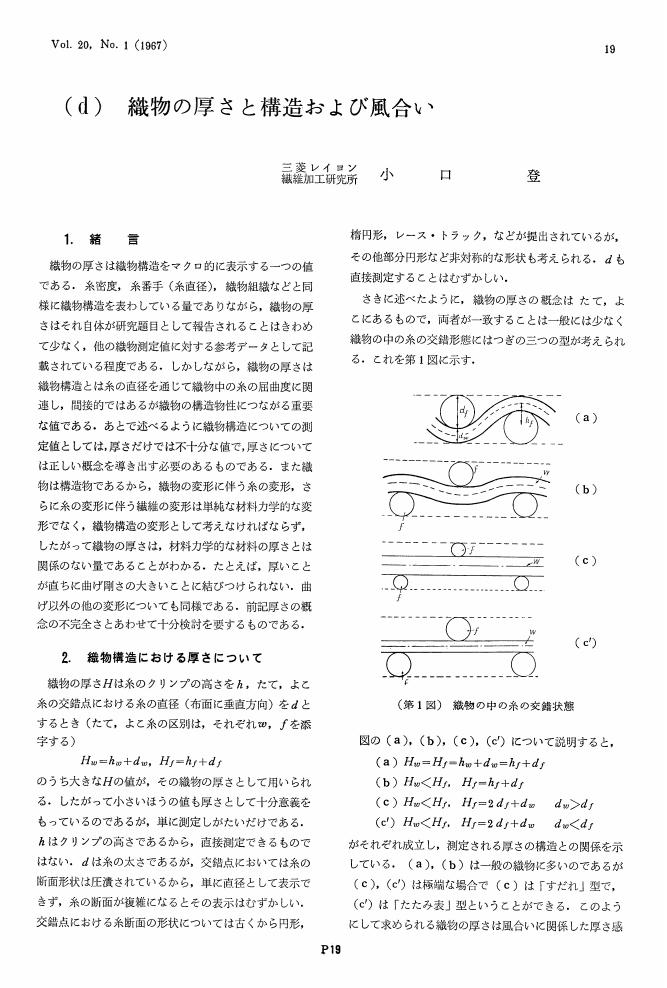1 0 0 0 OA 織物の厚さと構造および風合い
- 著者
- 小口 登
- 出版者
- 社団法人 日本繊維機械学会
- 雑誌
- 繊維工学 (ISSN:18838731)
- 巻号頁・発行日
- vol.20, no.1, pp.P19-P22, 1967-01-20 (Released:2010-09-27)
- 参考文献数
- 7
1 0 0 0 OA 日本の韓国製造業への直接投資と技術移転
- 著者
- 小口 登良 星野 優子
- 出版者
- JAPAN SECTION OF THE REGIONAL SCIENCE ASSOCIATION INTERNATIONAL
- 雑誌
- 地域学研究 (ISSN:02876256)
- 巻号頁・発行日
- vol.30, no.3, pp.123-134, 2000-12-31 (Released:2008-10-10)
- 参考文献数
- 19
Technology transfer is one of the reasons for host economies to welcome FDI. However, quite often we hear disappointments by the host economies as to the realization of technology transfer. In this paper, we focus on the effect of Japanese direct investment in Korea. We estimate the improvement of overall productivity of Korean manufacturing sector due to Japanese direct investment. The over all productivity is measured by the Total Factor Productivity. We estimate the rate of change of TFP for Korean manufacturing industry. We then decompose the TFP growth into three factors, namely (1) shift in cost function, (2) scale effect, and (3) effect of FDI, based on the estimates of the translog cost function.For the period of 1972-95, average annual growth rate of TFP was 3.66 per cent. It was found that during early days of FDI, foreign capital ratio had negative effect on TFP growth. The negative effect became smaller in the 80s, and then in 90s it turned to positive. This may be interpreted that it takes time to foreign firms to operate at full efficiency. More straight interpretation is also possible. That is, during early period, FDI was to take advantage of lower wage of the host country and not a vehicle of technology transfer of advanced production technology. In later years the nature of FDI shifted with the change of management strategy to put emphasis on global optimal allocation of production facilities and specialization at global level. It is important to know that the effect of FDI was not the same throughout the analysis period. It may work as a vehicle of technology transfer as well as tool of exploitation of low wages. In this paper, it was found that Japanese direct investment may have shifted from the latter to former in nature in the 90s.
